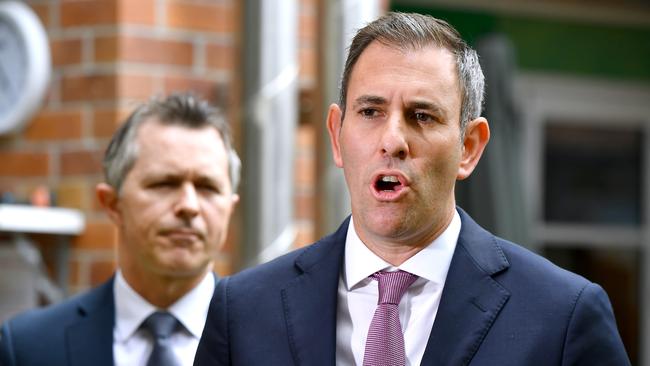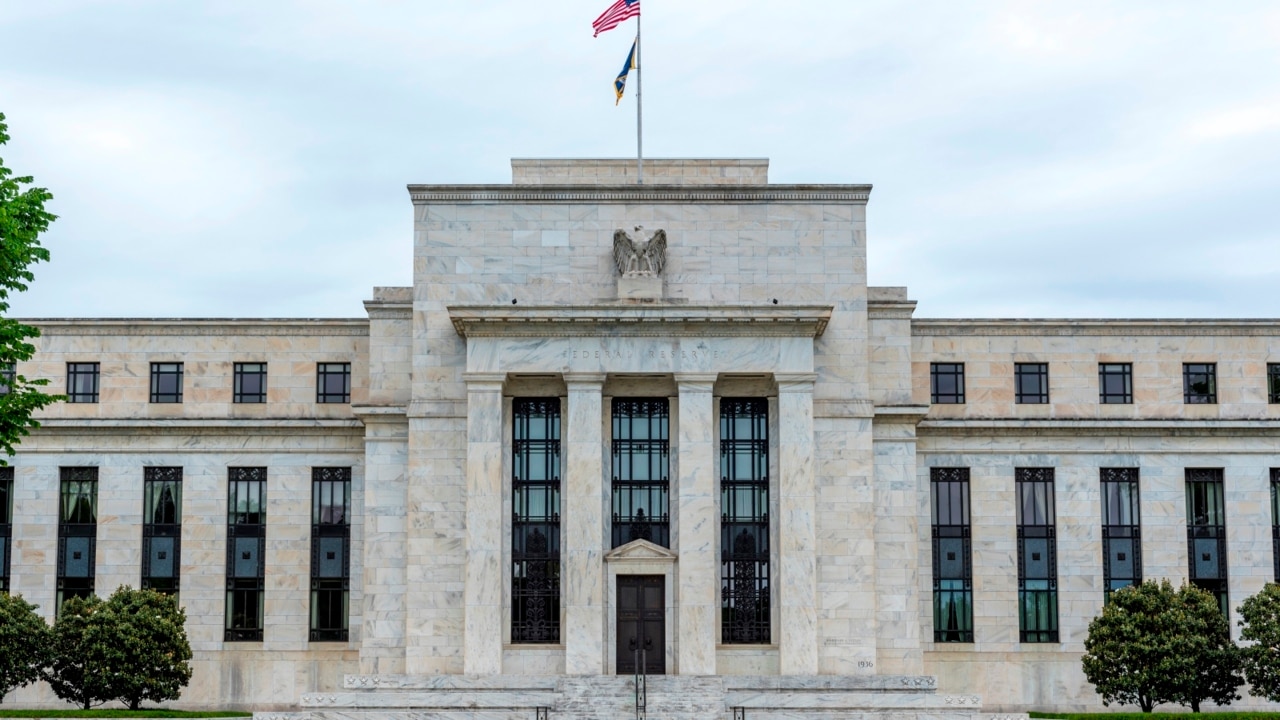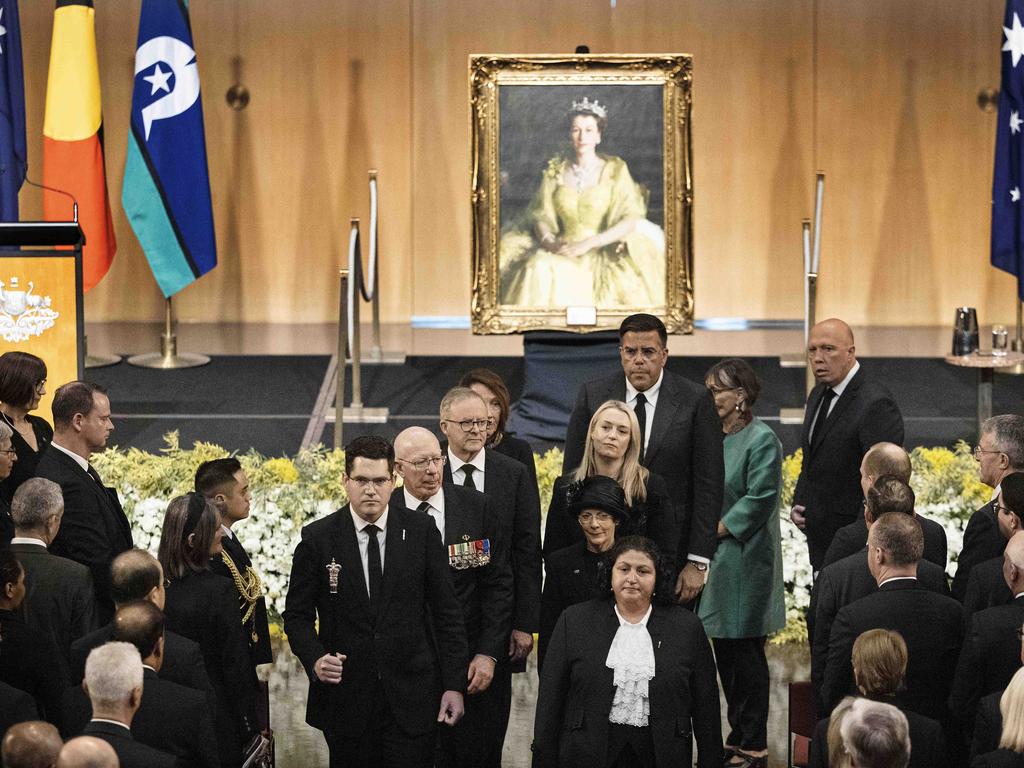Treasurer Jim Chalmers warns worst to come after US rate rise
Jim Chalmers has warned that ‘intensifying’ international headwinds and rampant inflation are leading to brutal rate rises and economic uncertainty.

Jim Chalmers has warned that “intensifying” international headwinds and rampant inflation are leading to brutal rate rises and economic uncertainty, as the US Federal Reserve stoked fresh concerns of a global recession after hiking rates and predicting more pain to come.
The Treasurer will fly to Washington DC next month for meetings with Federal Reserve chairman Jerome Powell and World Bank president David Malpass, amid expectations that soaring inflation will plunge the US economy into recession and spark a domino effect across international markets.
Dr Chalmers will also meet G20 finance ministers and central bank governors on October 12 and attend the IMF and World Bank annual meetings to discuss the impacts of the war in Ukraine, global energy crisis and slowdown in China.
The Federal Reserve on Thursday pushed through a third consecutive 0.75-percentage-point rate increase and signalled further increases were likely amid fears that attempts to tame inflation could tip the world’s largest economy into recession.
On the back of the decision, the Australian dollar fell to a two-year low and stockmarkets across the globe plunged with Wall Street ending the day in the red.
The Reserve Bank of Australia board, which this month delivered its fourth consecutive half-a-percentage-point rate rise, will discuss the speed and scale of upcoming interest rate hikes at its next meeting in response to the negative global economic outlook. Economists on Thursday said the RBA would likely lift the cash rate by 0.5 percentage points when it meets on October 4.

Dr Chalmers said his meetings with international counterparts would be dominated by the “deteriorating conditions we all face”.
“The deeply concerning developments around the world, as well as new pressures on spending, provide the backdrop for the budget my colleagues and I are working on,” said Dr Chalmers, writing for The Australian.
“These global challenges we confront are intensifying, not dissipating: inflation is rampant; central banks are responding with blunt and brutal rate rises; and growth is slowing.
“The economies of the United States and the United Kingdom are in reverse; China’s has slowed markedly; and the war in Ukraine sparked an energy crisis which shows no signs of abating. This is why the International Monetary Fund won’t rule out another global recession.”
RBA deputy governor Michele Bullock on Wednesday described the global economy as being on a “knife edge” as it reels from higher interest rates, lockdowns in China and energy shocks across Europe.
Minutes from the RBA’s September 6 meeting released this week said: “The size and timing of future interest rate increases will continue to be guided by the incoming data and the board’s assessment of the outlook for inflation and the labour market, including the risks to the outlook”.

With inflation in Australia forecast to peak at 7.75 per cent by the end of the year, the RBA warned the outlook for global economic growth had deteriorated and posed a key uncertainty.
AMP Capital chief economist Shane Oliver said it was almost certain Europe would plunge into recession as nations grappled with the worsening energy crunch and rated the chances of a fully fledged recession in the US at 50-50.
“We’re in somewhat of a better shape,” Mr Oliver said. “We’ll almost certainly see another rate hike next month and more after that but the RBA can take a slightly less hawkish path than the Fed.”
He said a combination of factors in the US – including pessimistic unemployment forecasts, slower growth and higher inflation – had raised fears of a recession hitting earnings growth.
“They’ve revised down their growth forecasts, revised up their unemployment rate,” Mr Oliver said. “It’s a perfect storm. Powell has reiterated that their overarching focus is getting inflation down and that they would tolerate a recession, even though they’re not forecasting one.”
A new Barclays economics research report said that “with the off-ramp becoming more distant”, a US recession seemed much more likely.
“With the (Federal Reserve) committee clearly assessing the need for additional hikes using data measures that either naturally lag the cycle (such as inflation) or are released with a delay (openings and quits), this diminished regard for overtightening risks considerably increases the likelihood of recession in the coming year,” Barclays said.
Ahead of delivering his first budget on October 25, Dr Chalmers said relatively solid growth and historically low unemployment meant Australia would likely “fare better than our peers”.
“I’m optimistic and confident about the future, but realistic too,” he said. “Like other countries around the world we still face that now-familiar and unwelcome combination of supply chain disruptions, high and rising inflation and falling real wages.”

After this week revealing that booming commodity prices and the strongest labour market in decades had delivered a $50bn windfall to the government’s bottom line, Dr Chalmers said the budget would focus on making the country more resilient.
The “bread-and-butter budget”, which will fund Labor’s election promises and reveal savings made from scrapped Coalition grants and funding programs, is expected to provide some cost-of-living measures. The temporary halving of fuel excise, which has delivered relief at the bowser for Australian motorists, ceases next Thursday.
“It means responsible cost-of-living relief; investing in our people, their skills and their future; and it means beginning the hard task of longer-term budget repair,” the Treasurer said.
“It means trying to deal with the issues in our clogged supply chains which are forcing up inflation, and providing relief from rising prices which delivers for the economy and doesn’t force the RBA’s hand on further rate rises.”
Dr Chalmers said his first budget would spark a “big national conversation about our economic challenges”, including the structural position of the nation’s finances moving forward. He said that as well as measuring what mattered in the “wellbeing budget”, the government was focused on releasing a new intergenerational report next year, completing the RBA review and finalising new analysis of tax expenditure.
“I’m more convinced than ever that Australians are up for real talk about the state of their economy and the budget, and that there’s a hunger to work together,” he said. “Australians know there’s no switch we can flick to make our challenges disappear; their expectations are realistic and tempered; they’re aware of the tricky terrain we’re navigating. No one budget can deal with pressures that have been building for a decade, but the hard work has begun.”








To join the conversation, please log in. Don't have an account? Register
Join the conversation, you are commenting as Logout